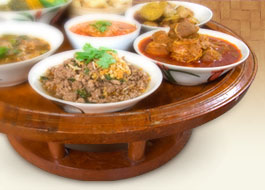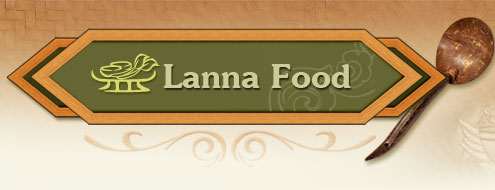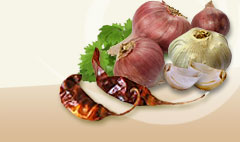Indian trumpet flower (Pheka) |
|
|
 | Oroxylum indicum Vent. |
|
| |
 | Bigononiaceae |
|
| |
 | Indian trumpet flower, Midnight horror |
|
| |
 | Lin fa, lin mai, lin chang (Tai Yai); ba lit mai, lit mai, ma lit mai (Northern) (Kanchana Diwiset, et al., 2005, p. 157). |
|
| |
 | Tree: 10-12 m. high, perennial, small tips, few stems, easy to break, Leaves: pinnaticect or pinnate, large, alternate; leaflets elliptical or ovate, acuminate, oblique at the base, 4-5 cm wide, 6-12 cm. long. inflorescence of racemes, terminal; Flowers funnel shaped with 5 lobes, wrinkled, recruved, red-purple, open at night and drop off in the morning. Capsule linear, flat, white, winged, transparent. Seeds numerous, every 2-3 years, 6-100 cm. long. The seed pods break open when fully mature (Kanchana Diwiset, et al., 2005, p. 157). |
|
| |
 |

Vitamin B1, B2 and niacin (Phak Phuen Ban Ahan Thai, 2005, p. 252) |

Seeds are used to reduce cough and phlegm. Used in Chinese tonic drink to reduce heartburn and thirst. Tender pods are cooked and eaten to improve physical condition and to help pass gas. Roots are used to treat diarrhea and dysentery. (Phak Phuen Ban Ahan Phuen Mueang, 2007, p. 64) |
|
| |
 | All year round. Flowering around June-July (Kanchana Diwiset, et al., 2005, p. 157) |
|
| |
 |
Kanchana Diwiset, et al. Compiler. (2005). Phak Phuen Ban Phak Nuea. Phennapha Sapcharoen, Editor. (2nd ed.). Nontaburi: Center for Text Development on Traditional Thai Medicine. (in thai). Phak Phuen Ban Ahan Thai. (2005). Bangkok: Saengdaet. (in thai). Wut Wuthithamwet. (1997). Saranukrom Samun Phrai: Ruam Lak Phesatchakam Thai. Bangkok: Odeon Store. (in thai). |
|
| |
|
|




